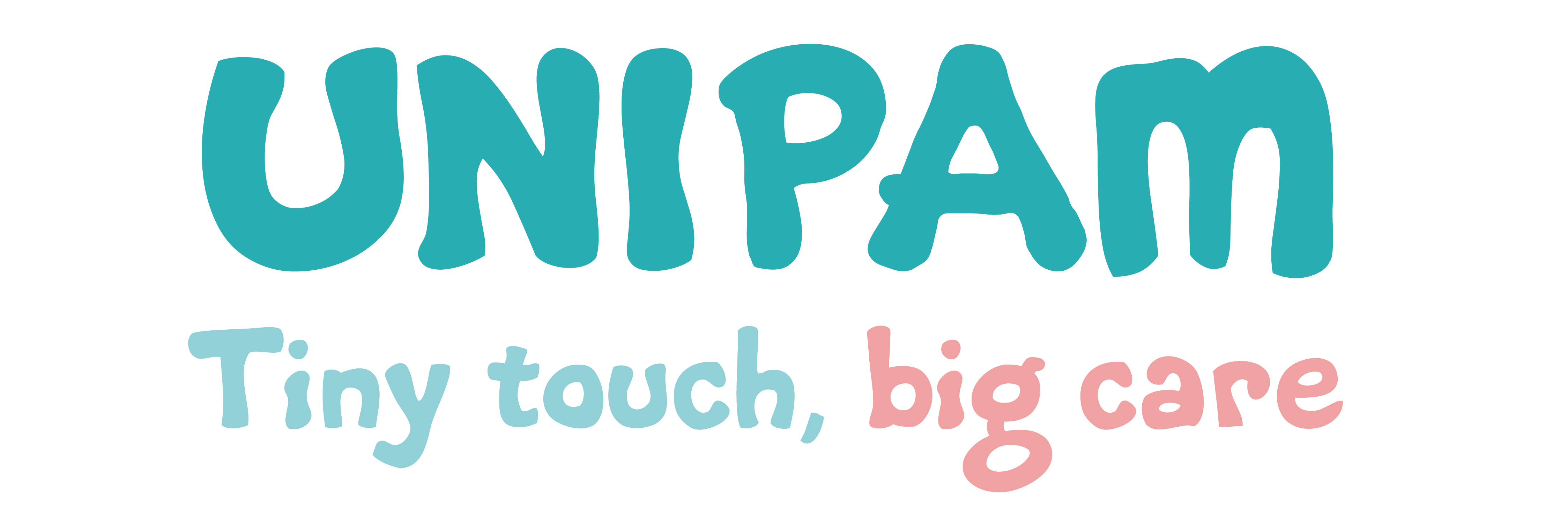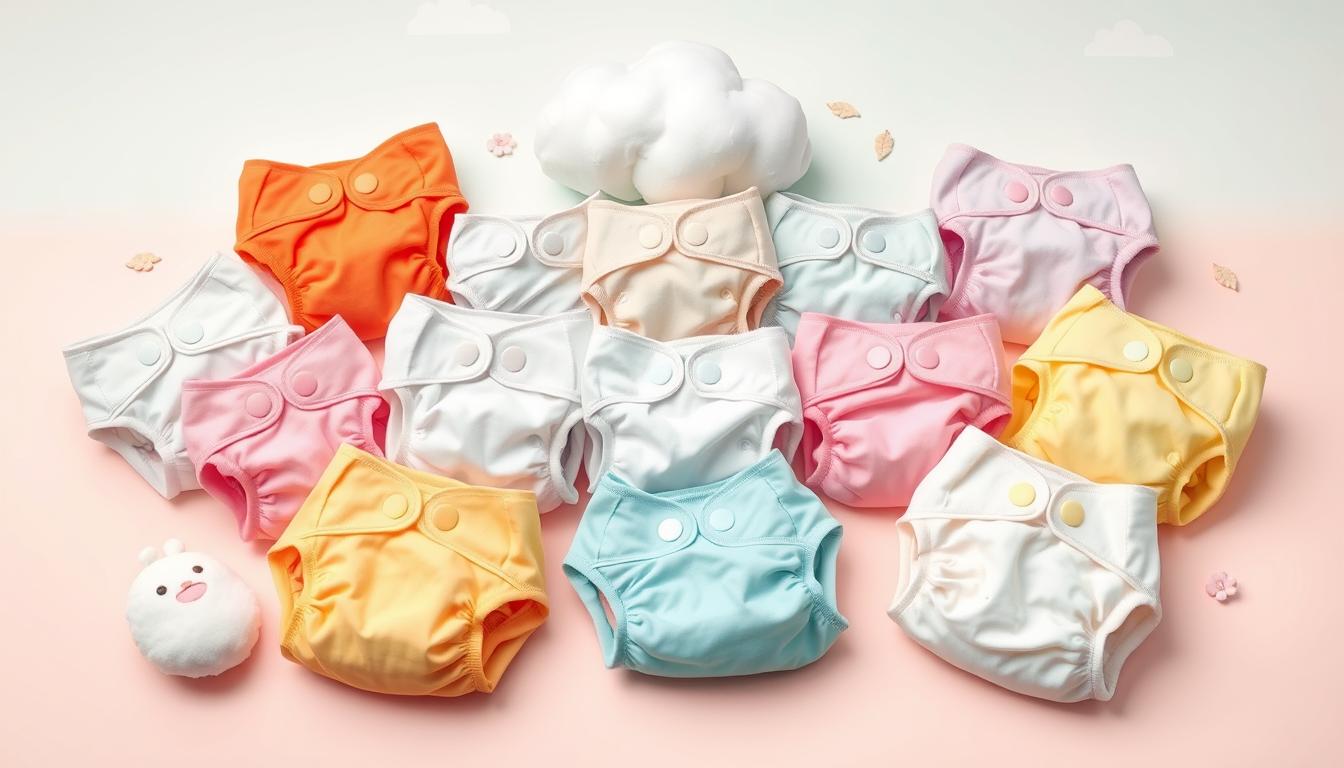3 Signs You’re Using the Wrong Diapers (And How to Fix It!)
As parents, we know how crucial it is to find the right baby diapers. The right size and fit are key to keeping our babies comfortable and avoiding problems like diaper rash and leaks. In this article, we’ll look at signs you might be using the wrong diapers. We’ll also share ways to find the perfect fit for your baby.
Key Takeaways
- Recognizing the signs of improper diaper fit, including discomfort, rashes, and leaks
- Understanding the importance of selecting the right diaper size for your baby’s stage of development
- Identifying and addressing common misconceptions about diaper sizing
- Implementing proactive measures to prevent diaper-related issues and maintain your baby’s comfort
- Exploring strategies for choosing the best diaper type (disposable or cloth) for your family’s needs
Understanding the Importance of Proper Diaper Fit
Choosing the right diaper size is key for your baby’s comfort and health. Many parents make mistakes about diaper sizing. This can cause discomfort and skin irritation for their little ones. We’ll look at how proper diaper fit affects your baby’s well-being.
Common Misconceptions About Diaper Sizing
Many think a diaper will “grow” with their baby, lasting longer than it should. But, diapers have specific size ranges. Using the wrong size can cause big problems. Oversized diapers may leak, while undersized ones can be uncomfortable.
Impact on Baby’s Comfort and Health
Proper diaper fit is vital for your baby’s comfort and skin health. An ill-fitting diaper can cause chafing, احمرار, والطفح الجلدي. These can be uncomfortable and lead to more issues.
Too tight diapers can restrict blood flow and affect your baby’s growth. On the other hand, too loose diapers can leak, causing diaper rash and skin irritations.
To keep your baby comfortable and healthy, follow a reliable diaper size guide. Regularly check the fit of their diapers. Understanding the importance of proper diaper fit is crucial for your baby’s comfort and health during the diapering journey.
“Choosing the right diaper size is one of the most important decisions you can make for your baby’s skin care and overall comfort.”
Red Flags: Persistent Diaper Rash and Skin Irritation
As parents, we always put our babies first. Diaper rash and skin irritation can upset both babies and caregivers. These signs often mean the diapers aren’t fitting right.
Diaper rash shows as red, inflamed, and tender skin. A bad diaper fit can make it worse. Too tight or too loose diapers cause friction and chafing. This leads to irritation and discomfort for the baby. Also, being in wet or soiled diapers too long can make the skin problems worse.
To fix these diaper rash solutions, watch your baby’s skin closely. Try different baby skin care products. Also, change the diaper size or type and keep a regular changing schedule.
Identifying the Causes
Diaper rash and skin irritation often come from the diapers. Look at these key factors:
- Diaper fit: Make sure the diapers fit well, not too tight or too loose.
- Absorbency: Use diapers that absorb well to keep your baby’s skin dry.
- Sensitivity: Some babies react to certain diaper materials or chemicals.
Effective Solutions
Here are ways to tackle diaper rash and skin irritation:
- Adjust the diaper size: Try different sizes or brands to find the best fit.
- Experiment with diaper rash solutions: Try different baby skin care products to soothe the skin.
- Establish a consistent changing routine: Change diapers often to avoid wet or soiled ones.
- Allow for air exposure: Give your baby time without diapers to let the skin breathe and heal.
By tackling the causes and using effective diaper rash solutions, we can keep our babies comfortable. Their baby skin care will also be well-protected.
Telltale Signs of Diaper Leaks and Blowouts
As parents, we face the challenge of diaper leaks and blowouts. These issues can upset our routines and affect our baby’s comfort and skin. Spotting these signs early helps us find the right baby diapers for our family.
Identifying Leak Patterns
Diaper leaks often show specific patterns. Look for damp spots on the diaper’s outer layer. This means the diaper isn’t absorbing well or fits poorly. Leaks around the legs or waistband might mean it’s time for a different size or style of diaper leaks.
Understanding Absorption Capacity
The diaper’s ability to absorb is key to avoiding leaks and blowouts. الأطفال’ fluid output varies, and diapers are made for different levels of wetness. If your baby’s diaper keeps getting too wet, it might be time to try a more absorbent one or a bigger size.
When to Size Up
- Your baby’s current diapers are leaving red marks or indentations on their skin
- You notice frequent leaks, even when the diaper appears to have plenty of absorbency left
- Your baby is growing rapidly and the current size no longer fits snugly
By paying attention to these signs and adjusting the diaper size, we can avoid messy and uncomfortable moments for our babies and ourselves.
Essential Guide to Baby Diapers and Sizing Charts
Choosing the right diapers for your baby can be tough. There are many types, like disposable and cloth diapers. Our guide will help you find the best diaper size for your baby’s comfort and health.
Finding the right fit is key. The right diaper size prevents leaks, rashes, وعدم الراحة. We’ll explore both disposable diapers و cloth diapers. This will help you choose based on your baby’s weight, shape, and needs.
| Diaper Type | Pros | Cons |
|---|---|---|
| Disposable Diapers |
|
|
| Cloth Diapers |
|
|
We’ve included detailed diaper size charts for a perfect fit. These charts consider your baby’s weight and measurements. Follow these guidelines to find the best diaper size for comfort and security.
Every baby is different, so what works for one might not work for another. Try different حفاضات to find what’s best for your family. With our guide, you’ll be able to provide the best diapering comfort and protection for your baby.
The Right Way to Check Diaper Fit
It’s important to make sure your baby’s diaper fits right. This keeps them comfortable and healthy. Here are a few easy steps to check if your baby is wearing the right size. We’ll look at the key areas to check and some practical tests to find the perfect fit.
Key Fitting Points to Consider
When checking for a wrong diaper fit, focus on these areas:
- Waist: The diaper should fit snugly around your baby’s waist, without being too tight or leaving gaps.
- Legs: The leg openings should be tight enough to prevent leaks, but not so tight that they restrict movement or cause irritation.
- Back: The diaper should cover the entire back, providing full coverage and preventing any gaps or sagging.
Testing for Proper Fit
To make sure your baby is wearing comfortable diapers, try these simple fit tests:
- Slide two fingers between the diaper and your baby’s skin. This should be a snug, not tight, ملائم.
- When your baby is standing, the diaper should not sag or gap at the waist or legs.
- Check for any red marks or indentations on your baby’s skin, which could indicate the diaper is too tight.
By carefully checking the fit of your baby’s diapers, you can help keep them comfortable and safe all day.
Choosing Between Disposable and Cloth Diapers
Choosing between disposable and cloth diapers is a big decision for parents. Both have their good points and not-so-good points. The right choice depends on what you and your family need.
Convenience and Ease of Use
Disposable حفاضات are super easy to use. They don’t need to be washed and can be thrown away after use. This is great for parents who are always on the go or don’t have a washer nearby. Cloth diapers, however, need to be washed regularly and take more time to manage.
Cost-Effectiveness
Cloth diapers are cheaper in the long run. They might cost more at first, but you save money because you can use them again and again. Disposable حفاضات are quick and easy, but they can get expensive, especially as your baby grows.
Environmental Impact
If you care about the planet, cloth diapers are a better choice. They make less waste and are better for the environment than disposable حفاضات. Disposable diapers can take a long time to break down and add to landfill waste.
Fit and Comfort
Both cloth diapers and disposable حفاضات come in different sizes and styles. Cloth diapers can be adjusted to fit your baby better as they grow. This can help prevent leaks and keep your baby comfortable.
Choosing between disposable and cloth diapers is a personal decision. Think about what matters most to you and your family. Consider convenience, cost, how they affect the environment, and how well they fit your baby. This will help you make the best choice for your family.
| Feature | Disposable Diapers | Cloth Diapers |
|---|---|---|
| Convenience | High | Lower |
| Cost | Higher | Lower |
| Environmental Impact | Higher | Lower |
| Fit and Comfort | جيد | Customizable |
Preventing Common Diaper-Related Issues
Keeping your baby’s skin healthy is very important. By taking the right steps and changing diapers on time, you can avoid problems like طفح الحفاضات. This ensures your baby stays comfortable and happy.
Proactive Care Measures
To keep your baby’s skin in top shape, try these steps:
- Choose gentle, fragrance-free baby skin care products for cleaning and moisturizing
- Put a thin layer of diaper rash ointment or cream on at each change to protect the skin
- Pat the skin dry instead of rubbing, and pick wipes without harsh chemicals
- Let your baby’s skin breathe by giving it air during diaper-free times
Establishing a Change Schedule
Having a good diaper change schedule is key for your baby’s skin health. Try to change diapers every 2-3 ساعات. Or, change them right away if they’re wet or dirty. This keeps your baby’s skin from getting irritated and uncomfortable.
By being proactive and following these easy steps, you can protect your baby’s skin. Remember, stopping problems before they start is the best way to keep your little one comfortable and healthy.
Best Practices for Overnight Diaper Protection
Keeping your little one comfortable and dry at night is key. The right diaper makes a big difference. Here are some tips to help your baby sleep snug and dry all night.
Specialized Overnight Diapers
Diapers made for nighttime can change everything. They have extra absorbency and special materials to stop diaper leaks. Look for ones that absorb well and fit snugly for a peaceful night’s sleep.
Absorbent Boosters
Using absorbent boosters with regular diapers is also smart. These inserts add extra absorbency and keep wetness in. They’re great for babies who wet a lot at night.
Proper Sizing for Overnight
Finding the right fit is important, especially at night. When your baby grows, switch to a bigger size. A diaper that’s too small can leak, while one that’s too big might not work well. Check the fit often and adjust as needed for the best راحة and protection.
من خلال اتباع هذه النصائح, you can have a quiet night’s sleep. You’ll know your baby is safe, dry, و مريحة. With the right diapers and a little planning, you can avoid diaper leaks and get better sleep for everyone.
When to Switch Diaper Brands or Types
Finding the right diaper for our babies can be a challenge. But if your current diapers aren’t working, it might be time to look for a new one. Switching diaper brands or types could be the solution to your baby’s needs.
Dealing with diaper rashes or skin irritation often means it’s time for a change. ال wrong diaper fit can cause these issues. Also, if you’re facing leaks و blowouts often, your diapers might not be doing their job.
When looking for new diapers, check the sizing charts carefully. The right fit is key to preventing leaks, rashes, وعدم الراحة. Try different brands until you find the perfect fit for your baby.
- Look for diapers with a snug but comfortable fit around the waist and legs
- Ensure the absorbent core extends far enough to the front and back
- Check that the materials are soft and gentle on your baby’s delicate skin
Switching to a new diaper type or brand might take some time. But, it’s worth it for your baby’s happiness and comfort. Trust your instincts and explore different options until you find the best baby diapers for your little one.
خاتمة
اختيار الحق baby diapers is key for your child’s comfort and health. We’ve covered how diaper size affects skin and how to spot leaks and blowouts. This guide helps you navigate the world of baby diapers.
Keeping your baby happy and dry starts with the right diaper fit. By using the tips we shared, you can pick the best baby diapers و diaper size guide for your family. This way, you can give your baby the comfort and protection they need.
As you keep parenting, stay alert, trust your gut, and ask your pediatrician if you’re unsure. With the right knowledge and a proactive mindset, your baby’s diaper time can be easy and stress-free.
FAQ
What are the common signs that I’m using the wrong diapers for my baby?
Signs you might be using the wrong diapers include diaper rash, leaks, and your baby’s discomfort. These problems can often be fixed by finding the right diaper fit and type for your child.
Why is proper diaper fit so important for my baby’s comfort and health?
A proper diaper fit is key for your baby’s health. The wrong fit can cause rashes and even developmental issues. Knowing about diaper sizing and fit is important for your child’s comfort and skin health.
How can I identify and address persistent diaper rash and skin irritation?
Diaper rash and skin irritation can be caused by many things, including a bad diaper fit. We’ll look at common causes and solutions to keep your baby’s skin healthy and comfy.
What are the telltale signs of diaper leaks and blowouts, and how can I prevent them?
Diaper leaks and blowouts mean it’s time to change the diaper size or type. We’ll show you how to spot these problems and how to pick a better diaper for a snug fit.
How do I determine the right diaper size and type for my baby?
Our guide covers all types of baby diapers and has sizing charts to find the perfect fit. We’ll talk about the good and bad of each diaper type to help you choose wisely.
What’s the proper way to check if a diaper fits my baby correctly?
Making sure your baby’s diaper fits right is important for their comfort and safety. We’ll show you how to check the fit and ensure it’s just right.
What are the advantages and disadvantages of disposable and cloth diapers?
Choosing between disposable and cloth diapers depends on several factors like convenience, cost, and environmental impact. We’ll compare these options to help you decide what’s best for your family.
How can I prevent common diaper-related issues and maintain my baby’s skin health?
To avoid diaper problems, use proactive care and a good diaper change schedule. We’ll give you tips to keep your baby’s skin healthy and comfy.
How can I ensure leak-free nights and optimal comfort for my baby during overnight diaper use?
For a good night’s sleep, your baby needs the right diaper protection. We’ll talk about special overnight diapers and how to size them for dry, comfy nights.
When should I consider switching diaper brands or types for my baby?
If you see persistent fit issues, leaks, or skin irritation, it might be time for a change. We’ll guide you on finding diapers that better fit your baby’s needs.


